16. WORLD WAR – ROUND TWO

THE SEA AND AIR WAR IN THE WEST
CONTENTS
 The battle of the Atlantic turns savage The battle of the Atlantic turns savage
 German U-boat wolf packs threaten German U-boat wolf packs threaten
England's lifeline (Spring of 1943)
 The battle turns in favor of England and The battle turns in favor of England and
the Allies (March-May 1943)
 The air war unleashes Allied wrath on The air war unleashes Allied wrath on
he German homeland
THE
BATTLE OF THE ATLANTIC TURNS SAVAGE |
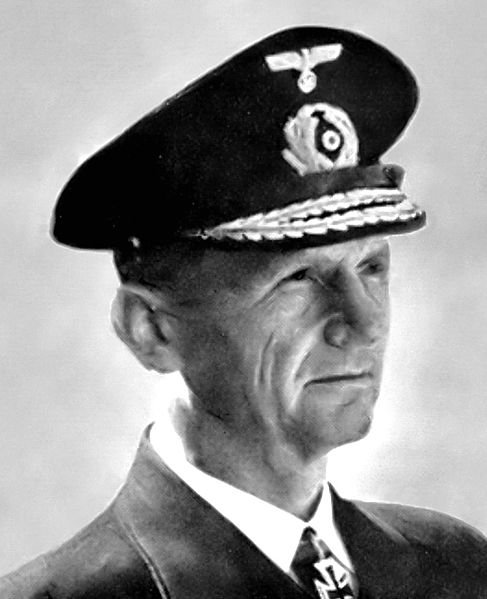 Vice Admiral Karl Dönitz,
flag officer in charge of German U-boats (BdU) from 1935 to 1943 and Commander
in Chief of the German Navy from 1943 to 1945
Vice Admiral Karl Dönitz,
flag officer in charge of German U-boats (BdU) from 1935 to 1943 and Commander
in Chief of the German Navy from 1943 to 1945
Imperial War Museum
 Allied tanker torpedoed in
Atlantic Ocean by German submarine. Ship crumbling amidship
under heat of fire, settles toward bottom of ocean - 1942
Allied tanker torpedoed in
Atlantic Ocean by German submarine. Ship crumbling amidship
under heat of fire, settles toward bottom of ocean - 1942
National Archives
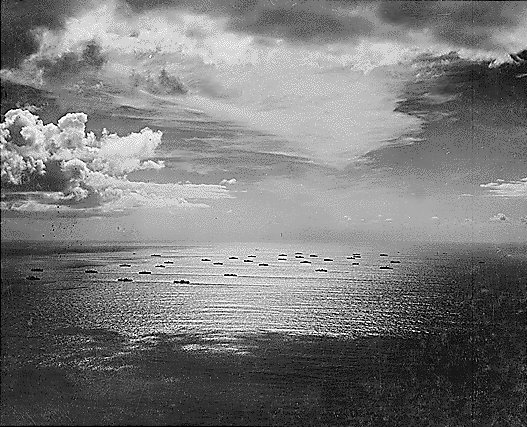 An Allied Casablanca convoy
heads eastward across the Atlantic bound for Africa, November 1942
An Allied Casablanca convoy
heads eastward across the Atlantic bound for Africa, November 1942
National Archives ARC
520948
GERMAN
U-BOAT WOLF PACKS THREATEN ENGLAND'S LIFELINE - SPRING OF 1943 |
|
German U-boat wolf packs threaten England's lifeline - spring of 1943
With the end of winter, U-boat wolf packs were so numerous in the
Atlantic that convoys were having great difficulty getting supplies to
England. If this were to continue, England could not
survive. Supplies in England were running disastrously low - and
it looked as if Dönitz was about able finally to knock England out of
the war. German U-Boats:
91 at the beginning of the spring of 1942
212 a year later: March of 1943
17 new U-Boats being added to the German fleet
each month
Allied shipping losses:
101 merchant ships sunk in October of 1942
134 in November
7 of 9 ships sunk carrying much needed fuel to
Eisenhower's forces in North Africa in January of
1943
In the first three weeks of March 1943 alone, the shipping situation was near catastrophic: for instance 17 ships were sunk by U-boats in two days.
THE
BATTLE TURNS IN FAVOR OF ENGLAND AND THE ALLIES (MARCH-MAY
1943) |
|
The Allies' introduction of bombers as an anti-submarine weapon
But then the battle amazingly turned in the opposite direction - in
favor of England and the Allies. Roosevelt ordered the transfer
of 60 long-range B-24 Liberator bombers from the Pacific fleet to the
Altlantic fleet (these bombers could stay aloft for 18 hours)
These were extremely deadly to the very vulnerable U-boats which could not stay underwater for too long
German U-boat losses:
8 sunk in the last week of March 1943
31 sunk in April
43 sunk in May
The crucial turning Point: Convoy ONS-5 - early May 1943
A fleet of 42 allied ships and their 7 escort warships ( joined by
others as the battle developed) encountered a wolf pack of 30 German
U-boats as they headed west in the mid-Atlantic toward
America. Ultimately several allied convoys of a total of
350 ships and 58 U-boats in three groups would get involved. Gale
force storms, fog and other bad weather made conditions for the convoys
bad - but for the U-boats even worse.
Ultimately in the course of a week's fighting, peaking on May 4th and
5th, the convoys lost a total of 12 ships. But the escorts
destroyed 6 U-boats and crippled 7 others - a huge loss for the German
navy.
It was becomming apparent (including to Dönitz) that the Allies were
learning how to effectively coordinate convoy and escort tactics
sufficiently to make U-boat attacks almost suicidal. May 24, 1943
Dönitz orders the withdrawal of the U-boats from the North Atlantic.
The Allies now had open passage from the United States to
England. Example: June to September 1943, 62 convoys with
3,546 merchant ships crossed the Atlantic without the loss of a single
ship, the Battle of the Atlantic had clearly been won by the
Allies. This would pave the way for the Allies' eventual victory
in Western Europe.
|
 Anti-Submarine Weapons: A
Mk VII depth charge being loaded onto a Mk IV depth charge thrower on
board HMS Dianthus.
Anti-Submarine Weapons: A
Mk VII depth charge being loaded onto a Mk IV depth charge thrower on
board HMS Dianthus.
Imperial War Museum
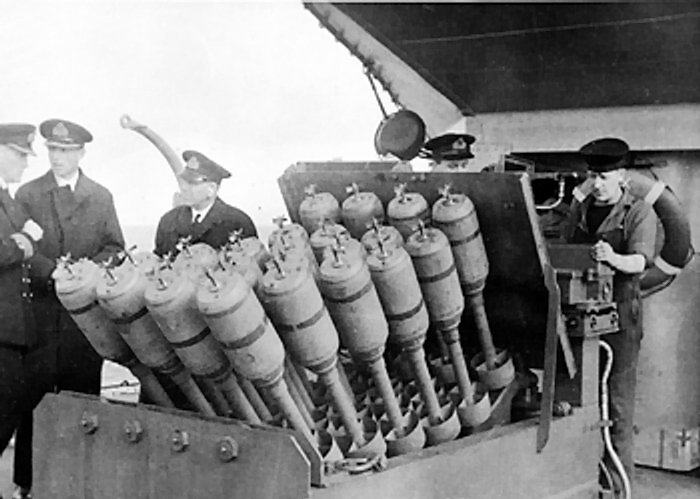 Anti-Submarine Weapons: Hedgehog,
a 24 barreled anti-submarine mortar mounted on the forecastle
of HMS Westcott
Anti-Submarine Weapons: Hedgehog,
a 24 barreled anti-submarine mortar mounted on the forecastle
of HMS Westcott
Imperial War Museum - IMW
A31000
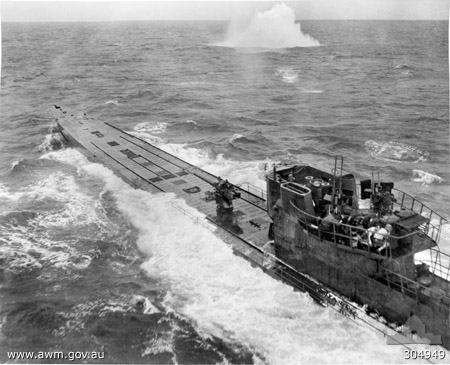 The Atlantic - c. 1943.
Sailors take cover around the conning tower of a German type IXC submarine under attack from
a very low flying aircraft. A depth bomb explodes in the distance
The Atlantic - c. 1943.
Sailors take cover around the conning tower of a German type IXC submarine under attack from
a very low flying aircraft. A depth bomb explodes in the distance
Australian War Memorial
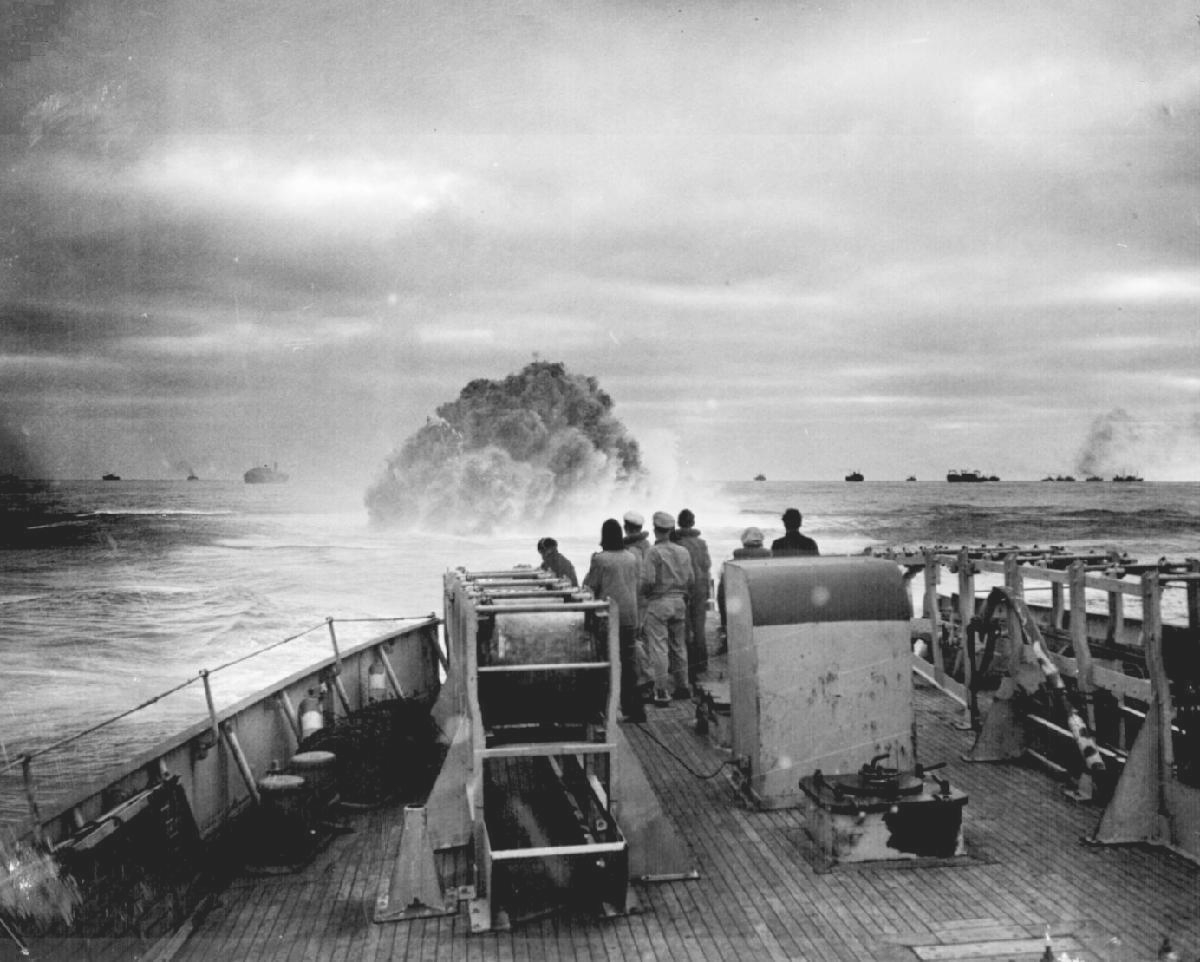
"Coast Guardsmen on the deck of the
U.S. Coast Guard Cutter Spencer watch the explosion of a depth charge which blasted a Nazi
U-boat's hope of breaking into the center of a large convoy."
Sinking of U-175. WO Jack January,
April 17, 1943.
National Archives
26-G-1517
THE
AIR WAR UNLEASHES ALLIED WRATH ON THE GERMAN HOMELAND |
 A tired US airman grabs a
quick bite to eat at an English airbase
A tired US airman grabs a
quick bite to eat at an English airbase
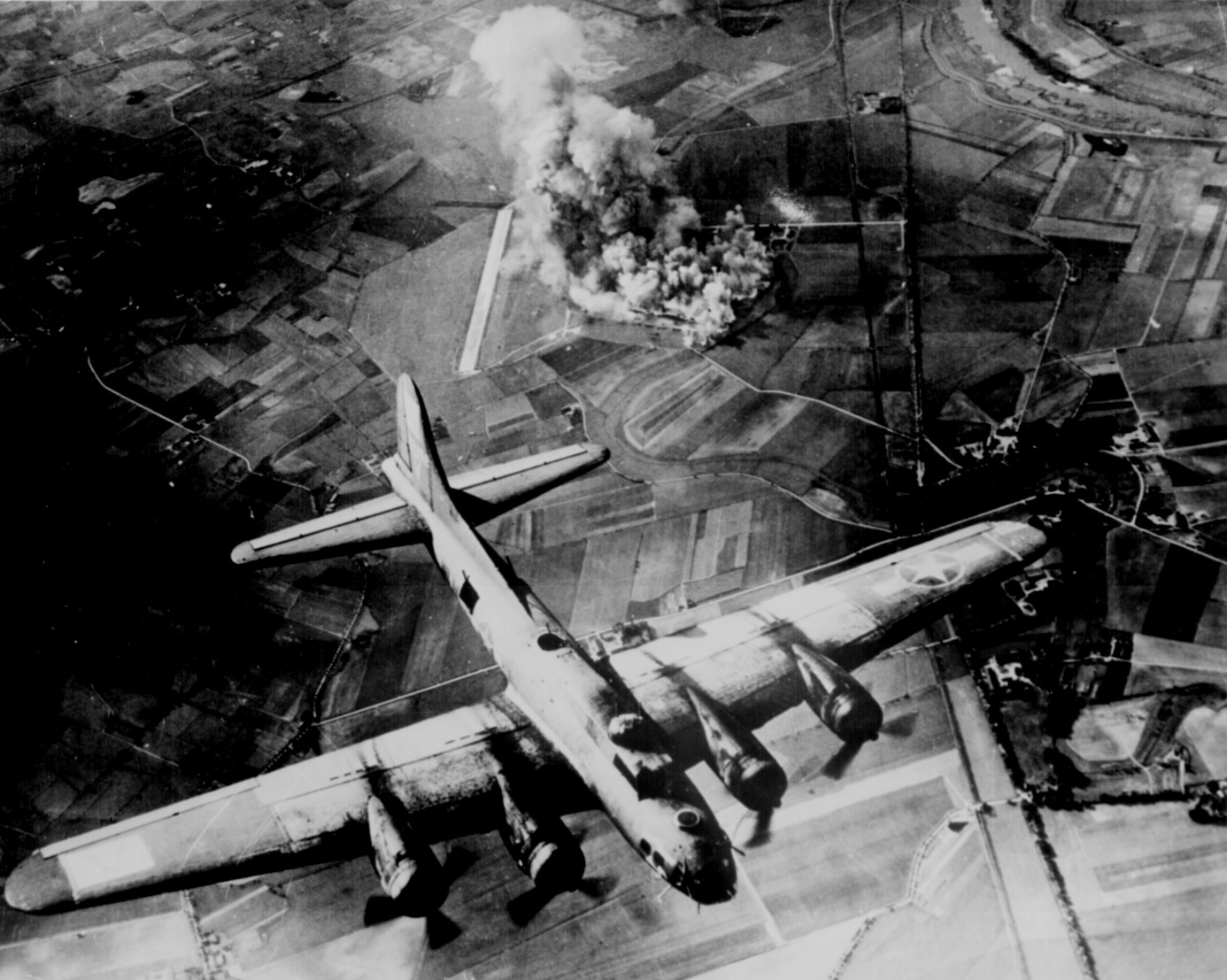
"The first big raid by the 8th Air Force
was on a Focke Wulf plant at Marienburg. Coming back, the Germans were up in
full force and we lost at least 80 ships-800 men, many of them pals." 1943.
National Archives 208-YE-7
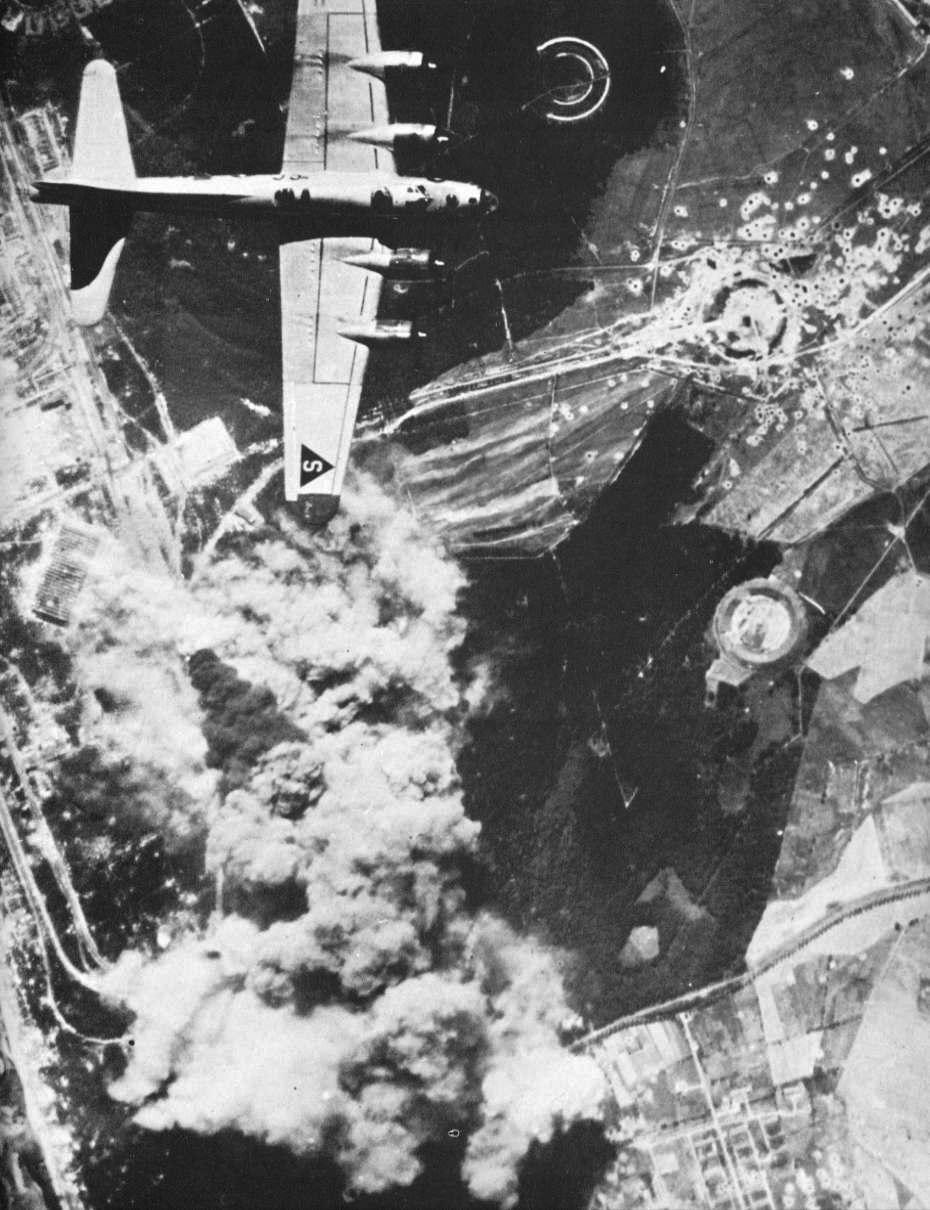
A US "Flying Fortress" over
the burning Peenemunde base in Germany
United
States Air Force
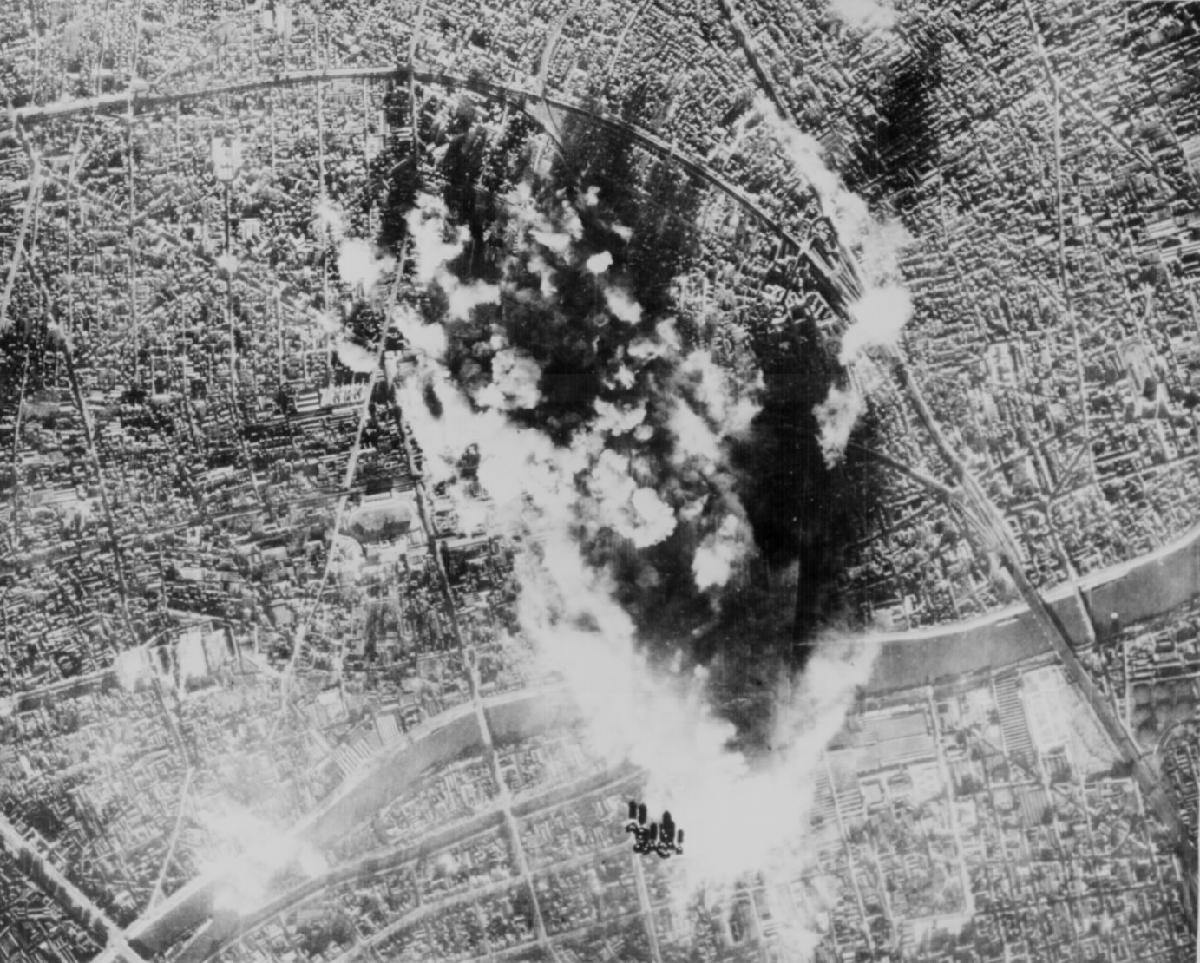
"Photograph made from B-17 Flying Fortress
of the 8th AAF Bomber Command on 31 Dec. when they attacked the vital CAM ball-
bearing plant and the nearby Hispano Suiza aircraft engine repair depot in Paris."
France, 1943.
National Archives
208-EX-249A-27
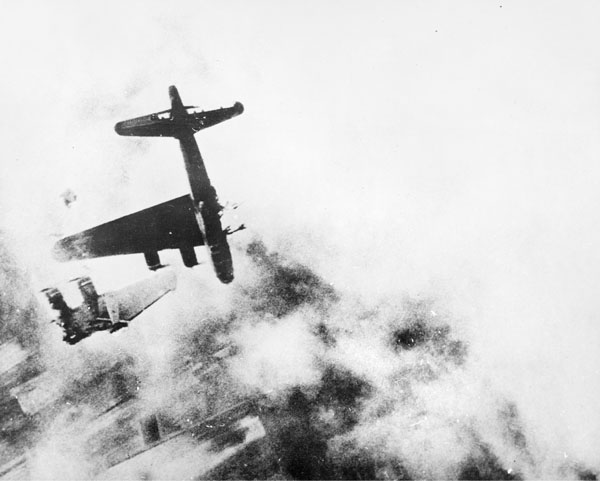 Destroyed U. S. Flying
Fortress
Destroyed U. S. Flying
Fortress
National
Archives
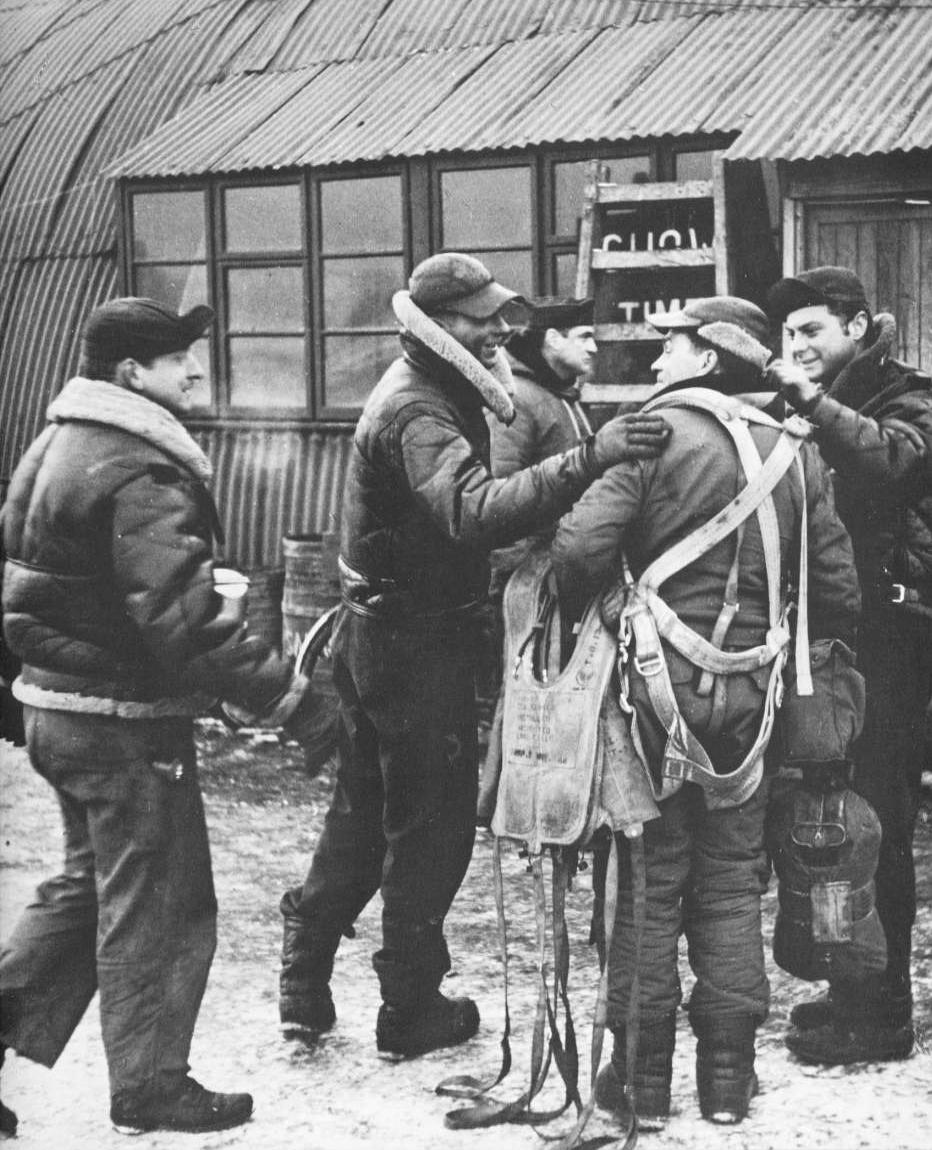
US Airmen at an English air
base greeting each other after a bombing run over Germany
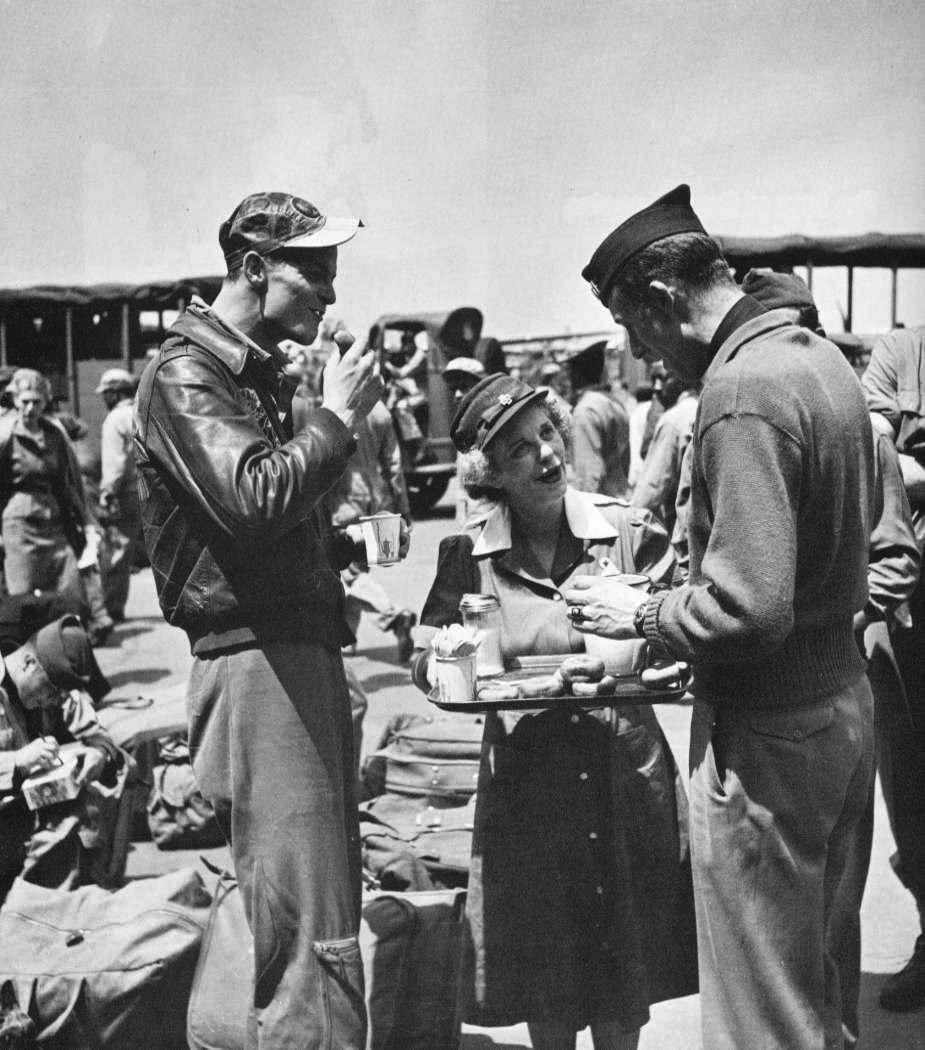
An English Red Cross lady
serving coffee and doughnuts to GIs
 Miles
H. Hodges Miles
H. Hodges
| |


 The battle of the Atlantic turns savage
The battle of the Atlantic turns savage
 German U-boat wolf packs threaten
German U-boat wolf packs threaten The battle turns in favor of England and
The battle turns in favor of England and The air war unleashes Allied wrath on
The air war unleashes Allied wrath on














